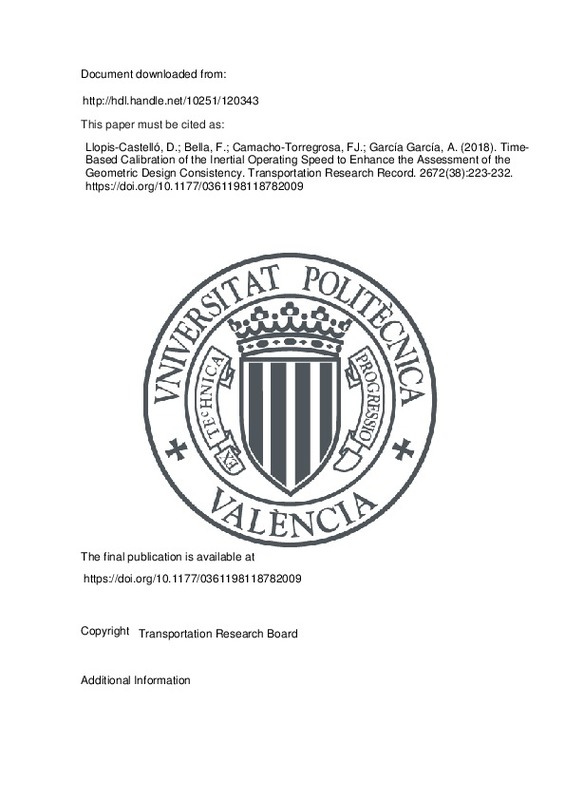JavaScript is disabled for your browser. Some features of this site may not work without it.
Buscar en RiuNet
Listar
Mi cuenta
Estadísticas
Ayuda RiuNet
Admin. UPV
Time-Based Calibration of the Inertial Operating Speed to Enhance the Assessment of the Geometric Design Consistency
Mostrar el registro completo del ítem
Llopis-Castelló, D.; Bella, F.; Camacho-Torregrosa, FJ.; García García, A. (2018). Time-Based Calibration of the Inertial Operating Speed to Enhance the Assessment of the Geometric Design Consistency. Transportation Research Record. 2672(38):223-232. https://doi.org/10.1177/0361198118782009
Por favor, use este identificador para citar o enlazar este ítem: http://hdl.handle.net/10251/120343
Ficheros en el ítem
Metadatos del ítem
| Título: | Time-Based Calibration of the Inertial Operating Speed to Enhance the Assessment of the Geometric Design Consistency | |
| Autor: | Bella, Francesco | |
| Entidad UPV: |
|
|
| Fecha difusión: |
|
|
| Resumen: |
[EN] Road crashes are mainly caused by three concurrent factors: infrastructure, vehicle, and human factors. The interaction between the infrastructure and human factors leads to the concept of geometric design consistency. ...[+]
|
|
| Palabras clave: |
|
|
| Derechos de uso: | Reserva de todos los derechos | |
| Fuente: |
|
|
| DOI: |
|
|
| Editorial: |
|
|
| Versión del editor: | https://doi.org/10.1177/0361198118782009 | |
| Código del Proyecto: |
|
|
| Agradecimientos: |
This research was subsidized by the Spanish Ministry of Economy, Industry, and Competitiveness through ‘‘Ayudas a la movilidad predoctoral para la realizacio´n de estancias breves en centros de I+ D 2015.’’ The study ...[+]
|
|
| Tipo: |
|







![[Cerrado]](/themes/UPV/images/candado.png)


